The 15 Most Famous Geographical Wonders Of China
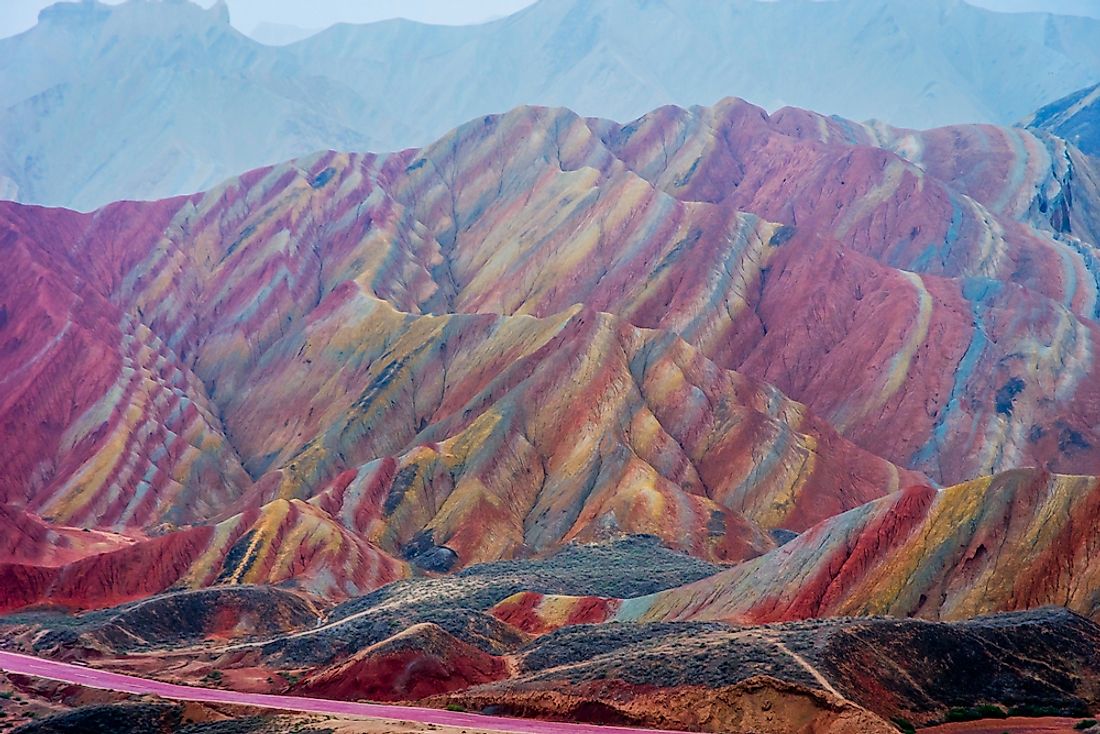
China is a vast country encompassing a great diversity of landscapes and cultures. It has some of the world’s most scenic natural destinations. The country has lofty mountains, raging rivers, lush, green forests, divine gorges, roaring waterfalls, and many other unique and mesmerizing geographical features that make it a beautiful land. Here is a list of some of the most iconic geographical features of China:
15. Wulingyuan Scenic Site
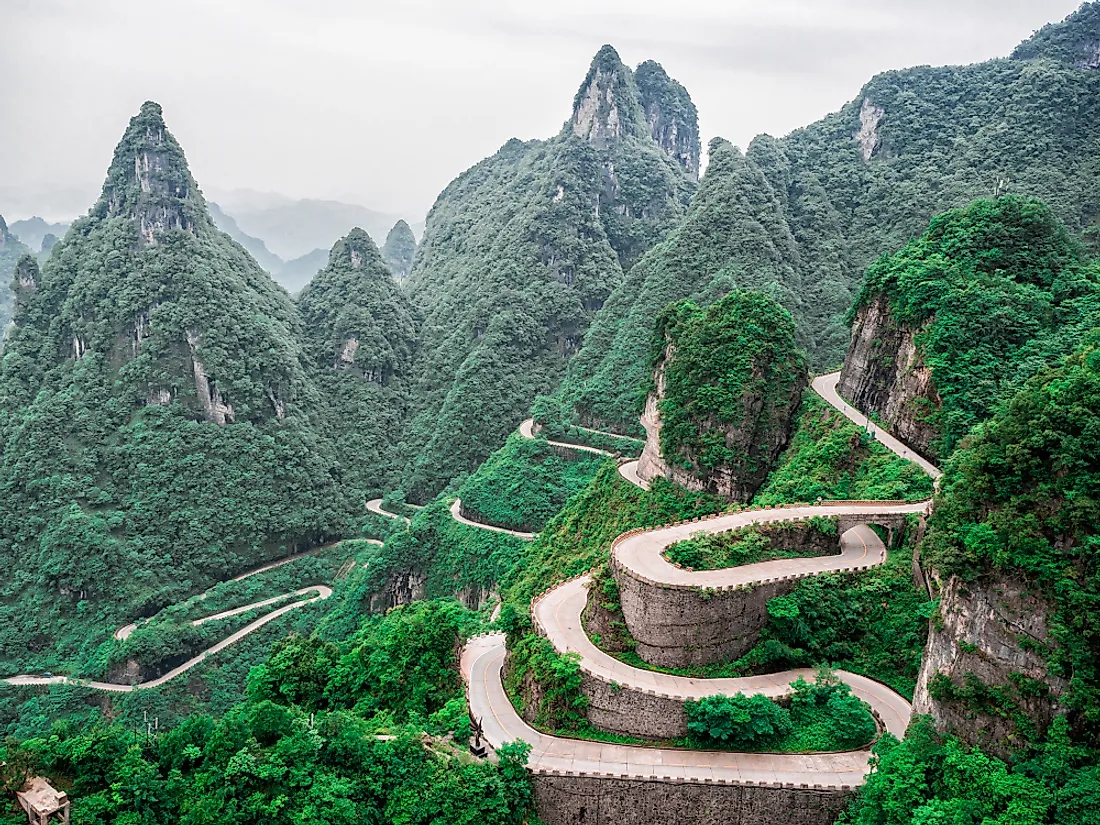
Wulingyuan is a scenic site located in the Hunan Province of China. The site is noted for its stunning natural landscape featuring over 3,000 pillars and peaks made of quartzite sandstone. A large number of these features are over 660 feet in height. The site also has rivers, waterfalls, lakes, pools, caves, natural bridges, etc. The uniqueness and surreal beauty of Wulingyuan were recognized by the UNESCO when the site was inscribed as a World Heritage Site in 1992. Four national parks have been established in the area to protect the beautiful landscape from human disturbance.
14. Tiger Leaping Gorge
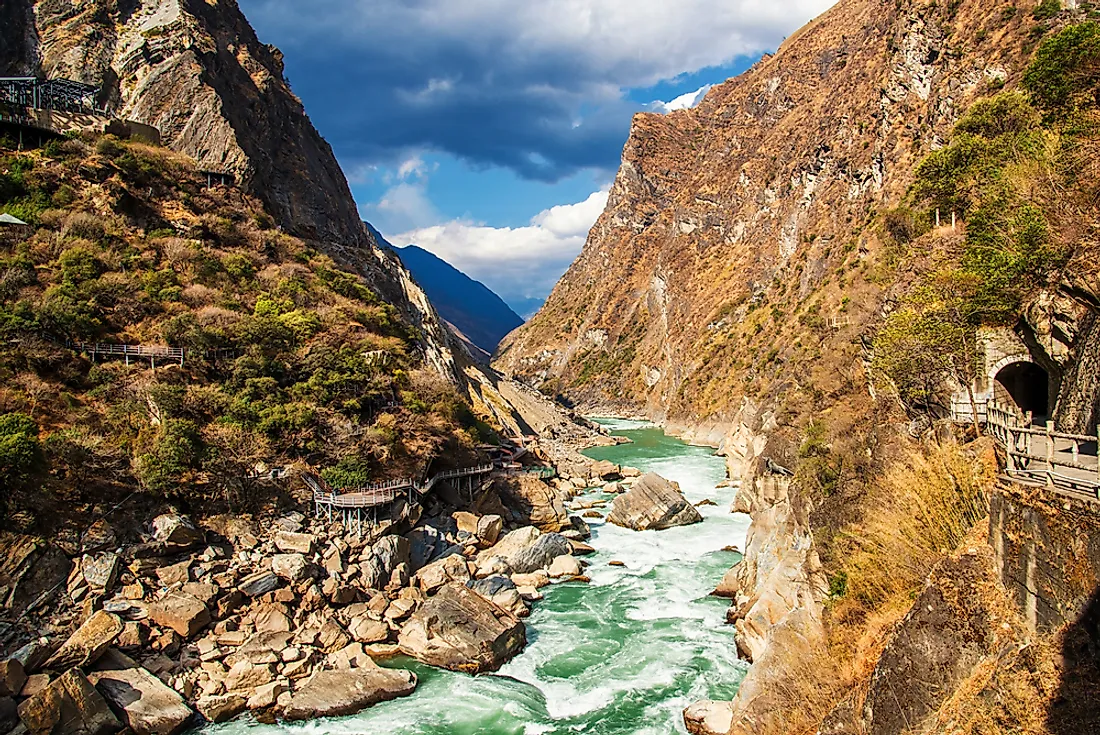
This spectacular canyon, one of the deepest in the world, is located on the Jinsha River in southwestern China’s Yunnan province. The river is one of the major tributaries of the Yangtze River and the canyon is part of a UNESCO World Heritage Site. The depth of the canyon is around 12,000 feet. The area is inhabited by a small population of indigenous Naxi people who live there in tiny hamlets and follow a simple way of life.
13. Bore Tides of the Qiantang River

The Qiantang River is a river in China that begins in the border area of the Jiangxi and Anhui provinces and drains into the Hangzhou Bay of the East China Sea. The river and the bay are noted across the world for having the largest tidal bore in the world. The bore can attain heights of up to 30 feet and travel at speeds as high as 40 km per hour. The tidal bore often referred to as the Silver Dragon, is a challenge to the ships in the harbor. The first surf competition on the river was held in 2013 and the bore is regarded as the world’s most unusual wave for a contest of this kind.
12. Rainbow Mountains of Zhangye
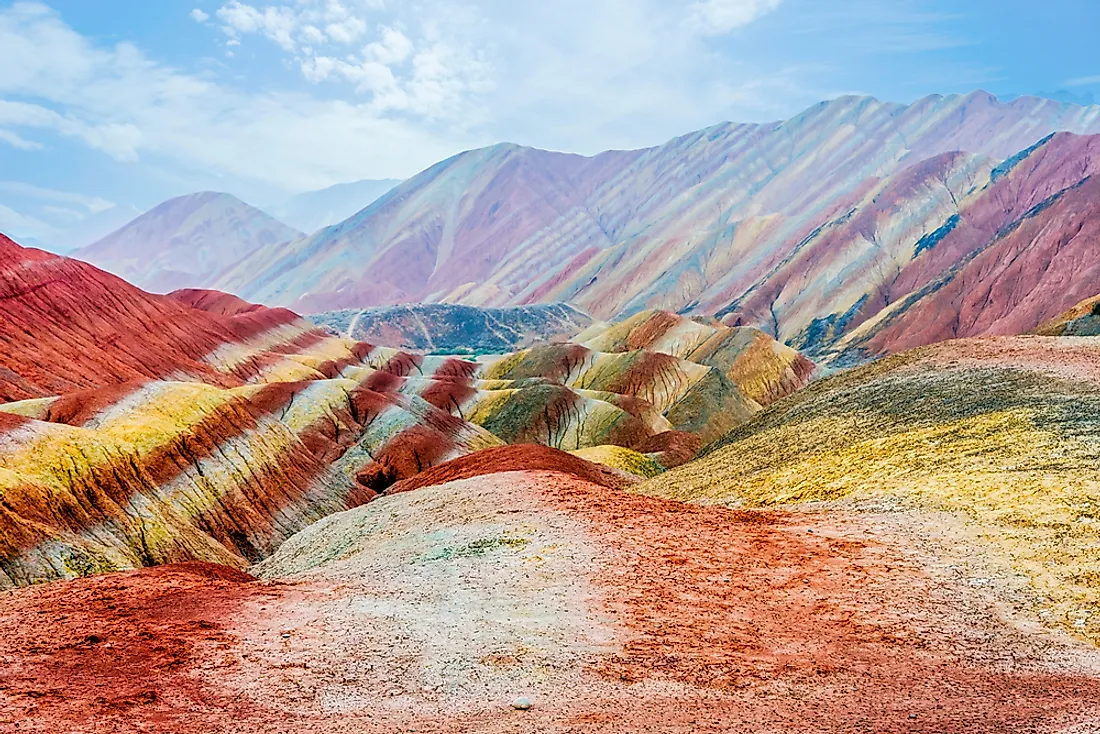
A unique natural landscape, the rainbow mountains are part of the Sunan and Linze counties in the Gansu province of China. They are located at the base of the Qilian Mountains. The site is part of the Zhangye National Geopark which encompasses an area of 322 square km. The colorful rock formations in the Geopark are famous across the world. Sandstone and other mineral deposits are responsible for the varying colors of the rocks in the area. The landscape features towers, ravines, pillars, and other such structures of varying sizes and colors that were carved over millions of years by the forces of nature.
11. Hukou Waterfall
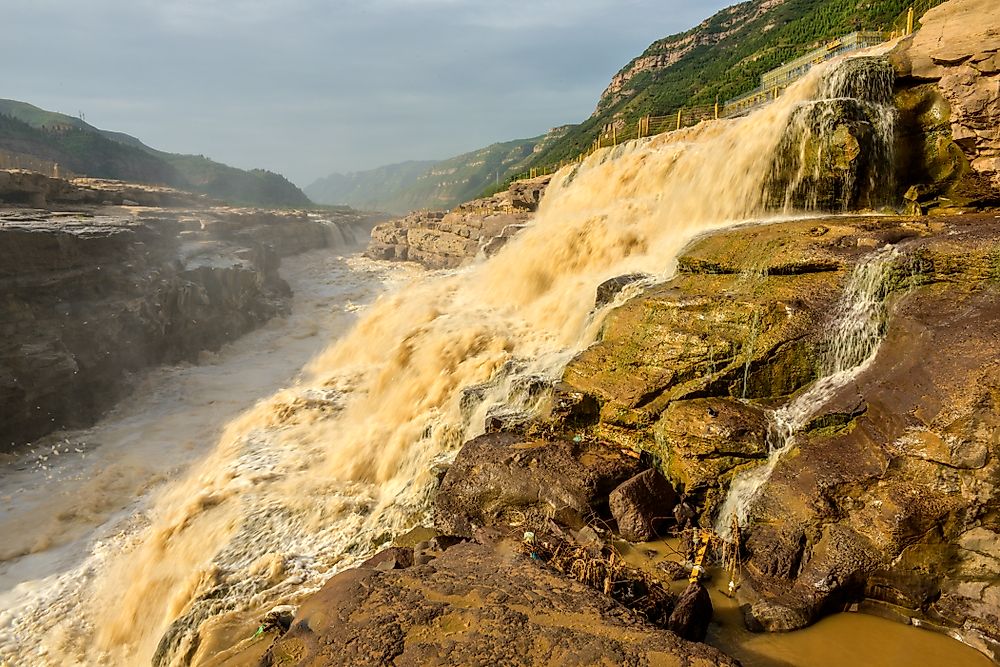
China’s second largest waterfall and the largest one on the Yellow River, the Hukou Waterfall is noted for its yellow waters. It is the world’s largest yellow waterfall. The Hukou is located at the border between the two provinces of Shanxi and Shaanxi. The width of the waterfall varies with season between 164 feet and 98 feet. A mystery is associated with the waterfall. At its base, there is a shining stone that moves up and down as per the water level. No matter how high the water level, the stone remains at least partly visible at all times.
10. Taklamakan Desert
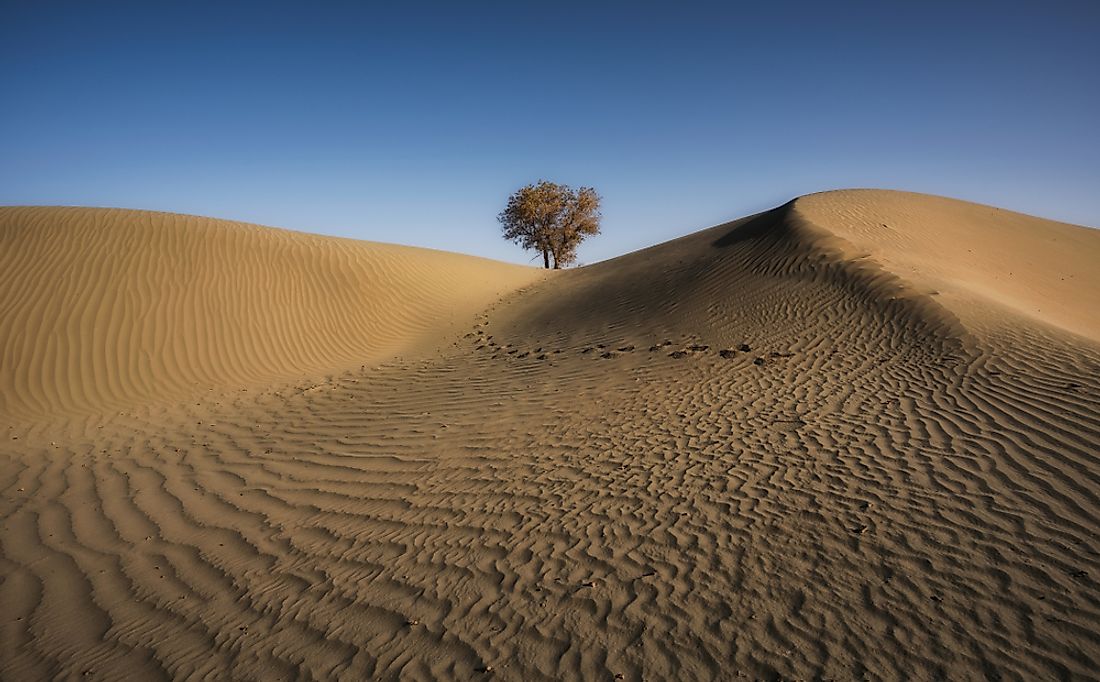
Encompassing an area of 330,000 square km, the Taklamakan Desert in China’s Xinjiang province is the world’s 16th largest desert. It is also the second largest shifting sand desert in the world with shifting sand dunes accounting for 85% of the desert area. The vast desert is surrounded by the lofty mountains of the Pamir, Kunlun, and Tianshan ranges. It is extremely dry and the severe water shortage makes it highly hazardous to cross the desert.
9. Jiuzhaigou Nature Reserve and National Park
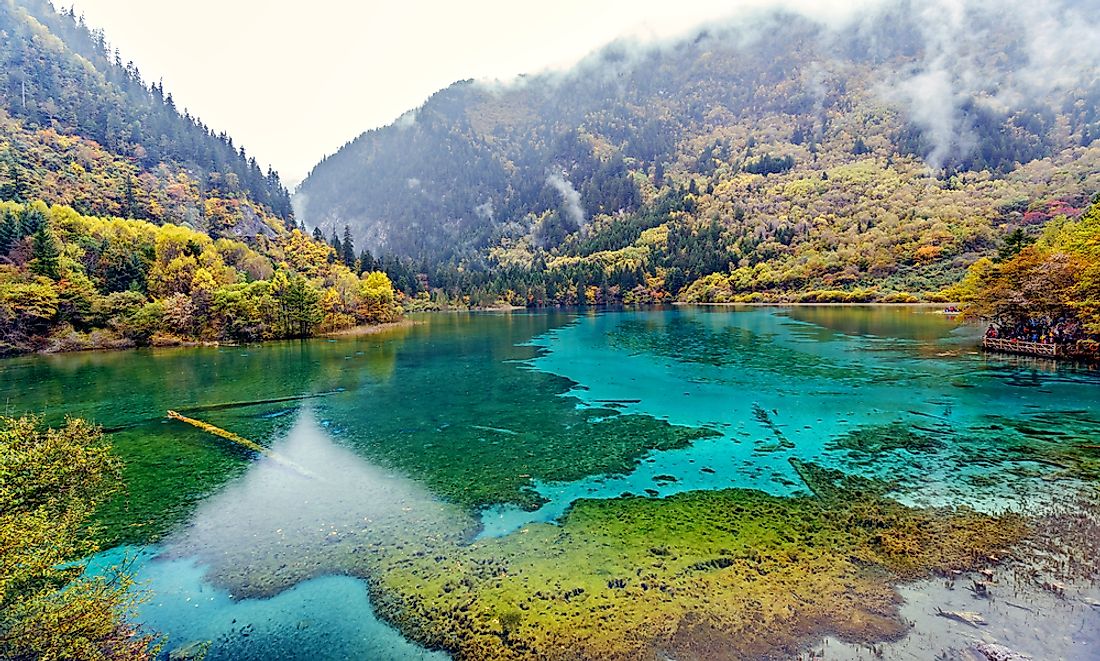
This site is located in a long valley in the Sichuan Province of China. UNESCO designated it as a World Heritage Site in 1992. The site is noteworthy for its surreal landscapes comprising of snow-capped peaks, tiered waterfalls, and colorful lakes. The altitude of the area varies between 6,600 and 14,800 feet. The endangered giant panda and the snub-nosed monkey are two of the most iconic species found here.
8. Yamdrok Lake
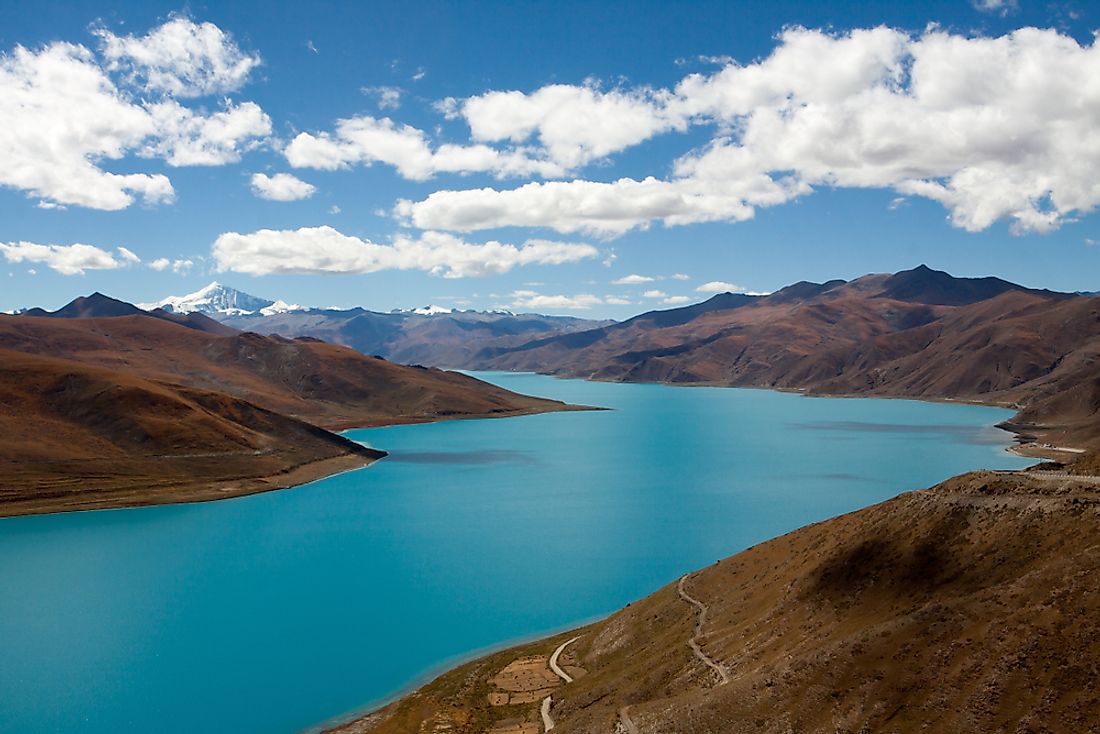
The Yamdrok Lake is one of Tibet’s three biggest sacred lakes. The beautiful lake is surrounded by tall snow-capped mountains and is fed by numerous mountain springs. The lake is believed to be the home of protective deities and is thus associated with spiritual powers. According to local beliefs, if the lake runs dry, then Tibet will cease to exist.
7. Singing Dunes And Crescent Lake of Dunhuang
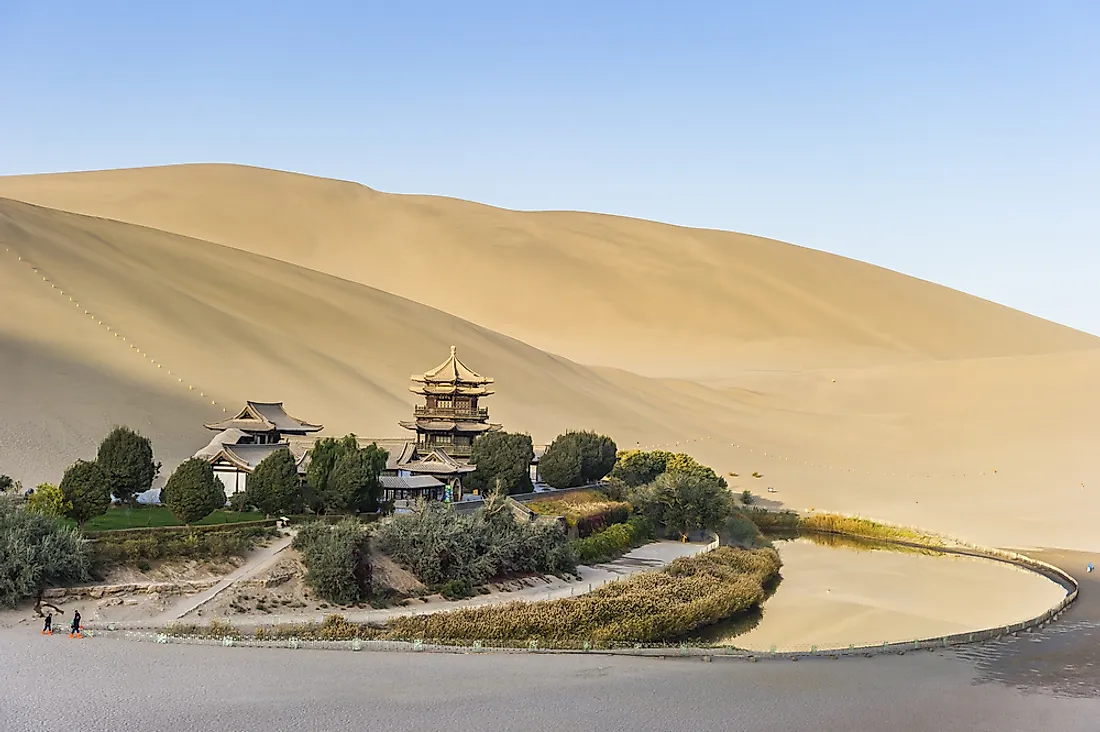
A natural wonder comprising of an oasis and sand dunes surrounding it exists close to the Dunhuang city in the Chinese province of Gansu. Although the Crescent Lake of the oasis (named so since it is shaped like a crescent) is surrounded by towering sand dunes and is continuously exposed to drifting sands, it was never buried underneath the sand. The sand dunes around it are called singing dunes since the wind that whips off the dunes creates a sound that is similar to that produced by some ancient instrumental music. The site is part of the Gobi Desert of China.
6. Cloud Sea On Mount Huang
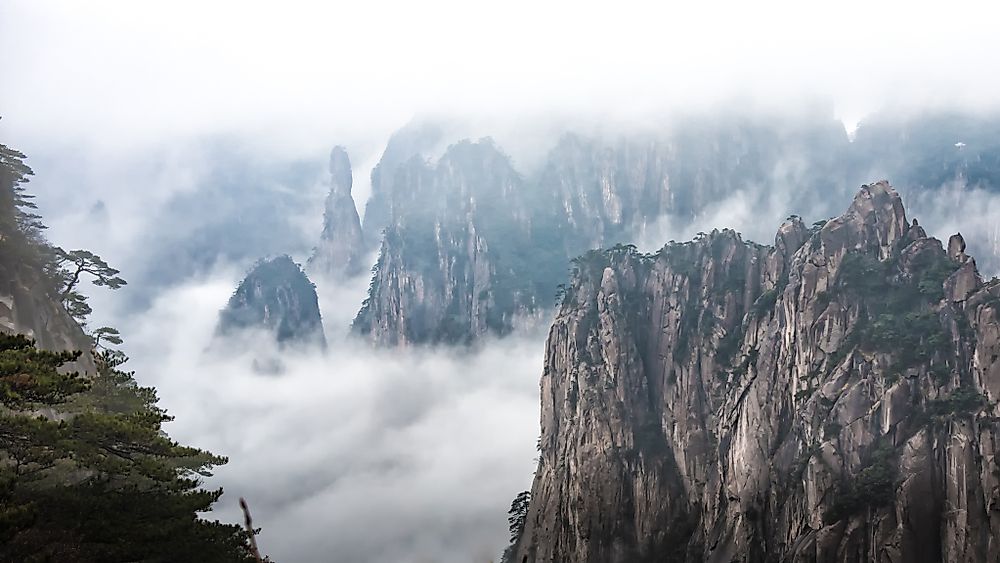
The Huangshan mountain range is located in China’s Anhui province. The area is famous for its spectacular scenery including views of the clouds from above. The landscape in the region features hot springs, dense pine forests, granite peaks of peculiar shapes, and lots of winter snow. The mountain range is part of a UNESCO World Heritage Site and receives thousands of tourists every year.
5. Icy Spectacle Of Jilin
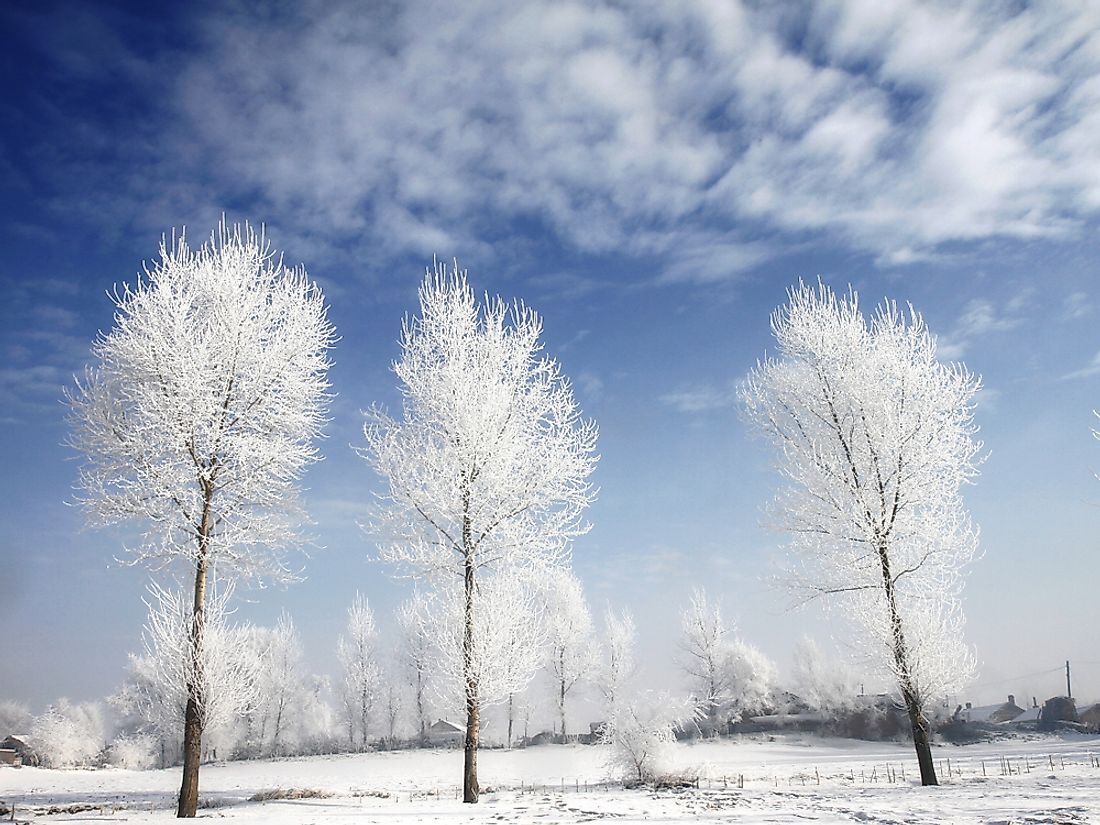
Jilin, a town in northeast China, is well-known for an icy spectacle every winter. During this time, fog forms below freezing temperatures. As soon as the super-cooled droplets of fog come in contact with the trees along the Songhua River in the city, the droplets freeze on the tree branches and leaves. As the ice granules build up, feathery white ice called rime is formed. The topography of Jilin is ideal for such a phenomenon to occur. Every year, the town celebrates the Jilin International Rime Ice and Snow Festival that includes skiing, skating, and photography competitions.
4. The Three Gorges
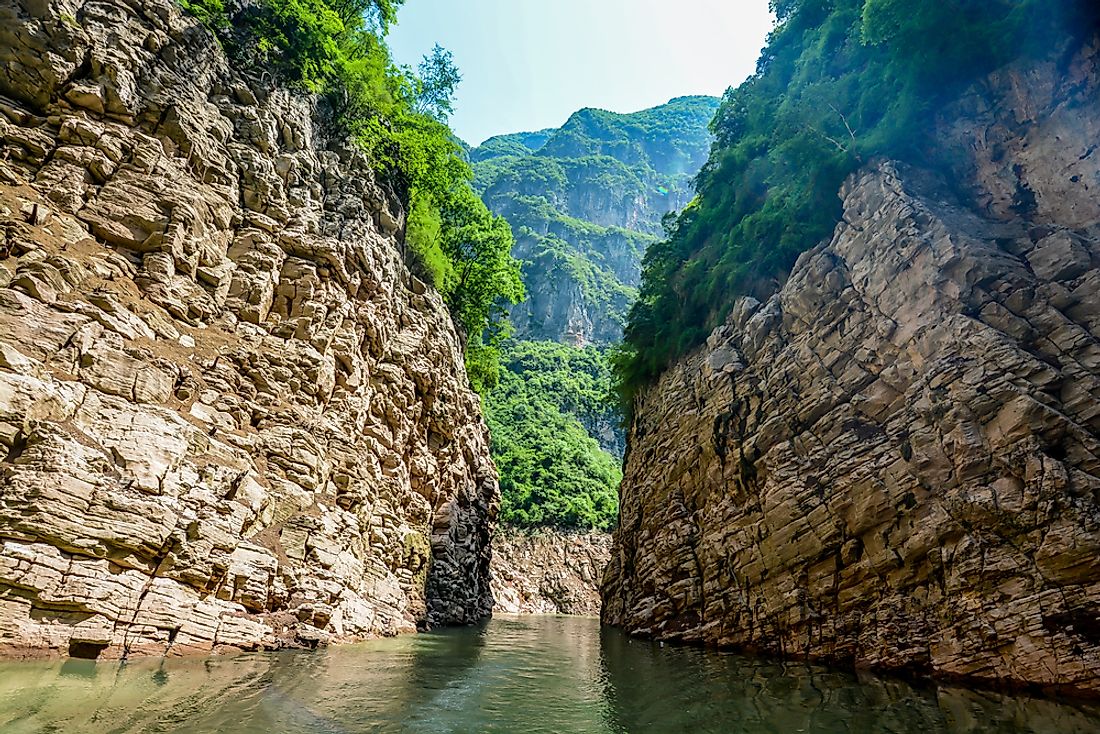
The Three Gorges is a gorgeous natural landscape located in the middle reaches of the Yangtze River. It comprises three adjacent gorges called the Wu, Xiling, and Qutang. These gorges start at the Baidi City and end in the Nanjing Pass. The beauty of the region has been praised for hundreds of years. Lofty mountains, cascading waterfalls, white, swift currents, and dense green forests are part of the scenic landscape of the region.
3. Stone Forest Of Yunnan
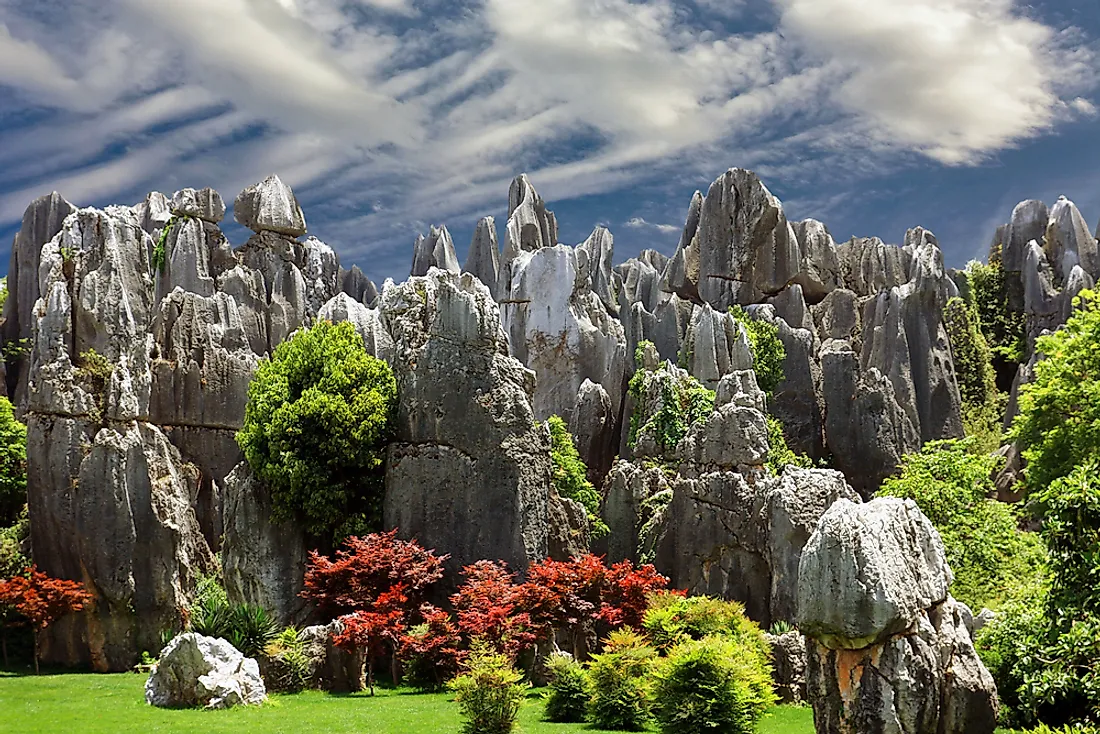
The stone forest, also known as Shilin, is a set of limestone formation located in the Yunnan Province of the country. Here, hundreds of tall rocks arise from the ground like stalagmites or petrified trees. Hence, the name stone forest has been chosen to designate the site. The area is part of a UNESCO World Heritage Site called the South China Karst. The Stone Forest is associated with many local legends. According to one, it is the birthplace of a beautiful girl called Ashima who turned into a stone when she was forbidden to marry the love of her life. As per the geologists, the site was part of a shallow sea about 270 million years back. The bed of the sea was made by large deposits of sandstone overlain by limestone. As wind and flowing water eroded the limestone layer, it resulted in the formation of the limestone pillars seen today.
2. Guilin Karst Scenery
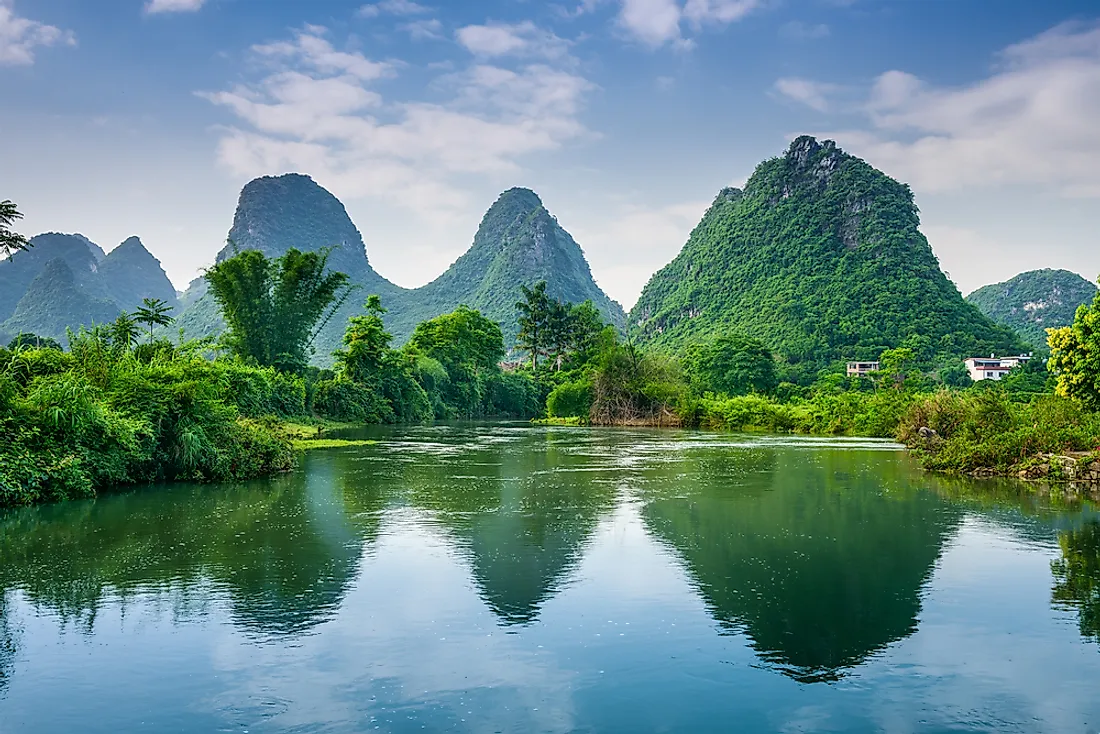
Guilin is a Chinese city located in the Guangxi Zhuang Autonomous Region of the country. It is famous for its dramatic karst landscape and is thus one of the most popular tourist destinations in China. The city is located on the Li River’s west bank. The river carves its way through the karst hills and caves in the region. Some of the notable features of the landscape include the Reed Flute Cave, Elephant-Trunk Hill, Mountain of Splendid Hues, Lingqu Canal, etc. The Reed Flute Cave is a limestone cave noted for its interesting rock formations, stalactites, and stalagmites. The Mountain of Splendid Hues is a mountain with layered rocks of different colors.
1. Mount Everest
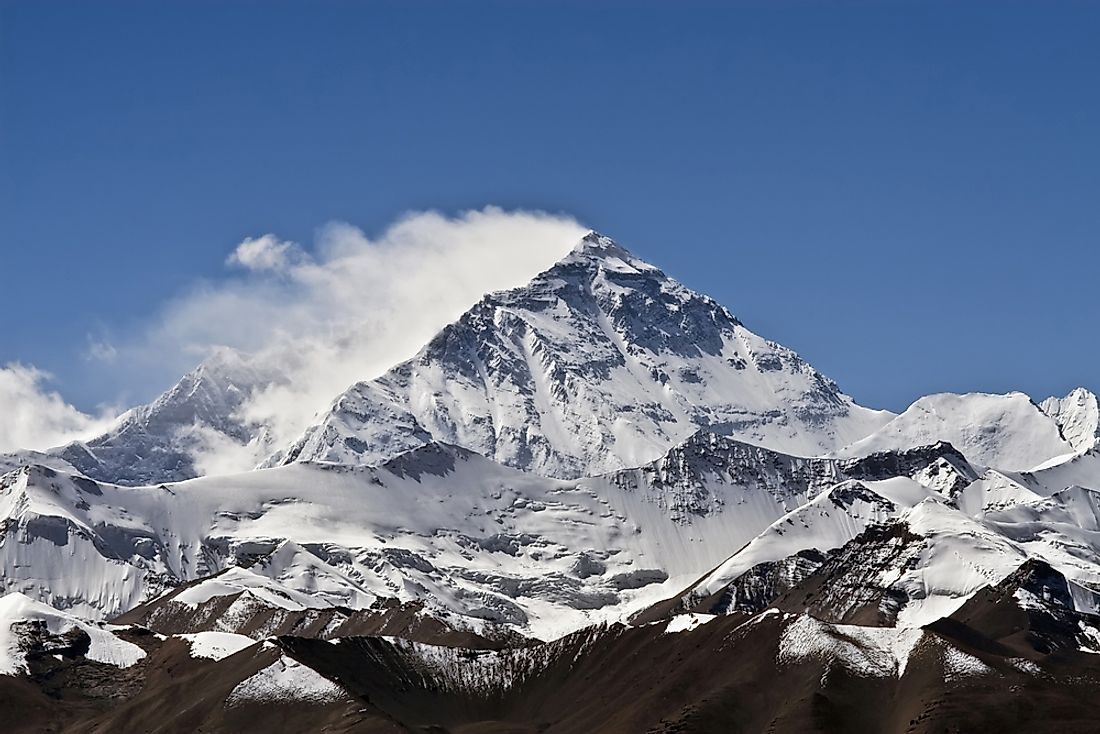
No list of China’s famous geographical features can be complete without mentioning the Mount Everest, the highest mountain in the world. It is located at an elevation of 8,848 m above sea-level. Mount Everest is not completely inside Chinese territory but it is located on the international border between Nepal and the Tibet Autonomous Region of China. The border runs across its summit point. The mountain attracts numerous climbers from all corners of the globe who try to overcome the extreme challenges offered by the mountain and reach its summit.











